Astrophotos
Images by
Dr. James N. Pierce
Emeritus Professor of Astronomy at
Minnesota State University, Mankato
Images of several types of astronomical objects/events are presented here. These were made over the course of many years using different types of cameras, lenses, etc. in order to record a variety of subjects. Success was not always achieved.
Lunar Eclipse, 2000:
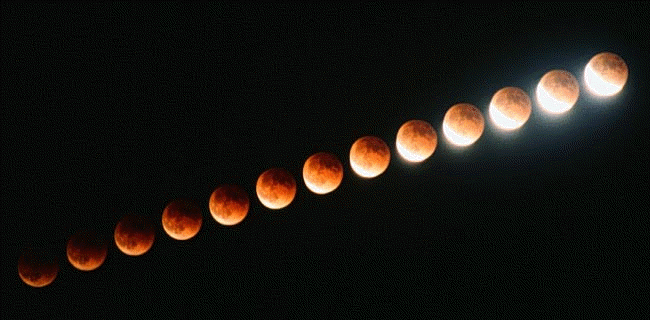
The sixth image from left is near 3rd contact.

The third image from right is just before 4th contact.
Total Solar Eclipse, 2017:
These are composite images made from individual images I took at our observing site in Orin, Wyoming on August 21, 2017.

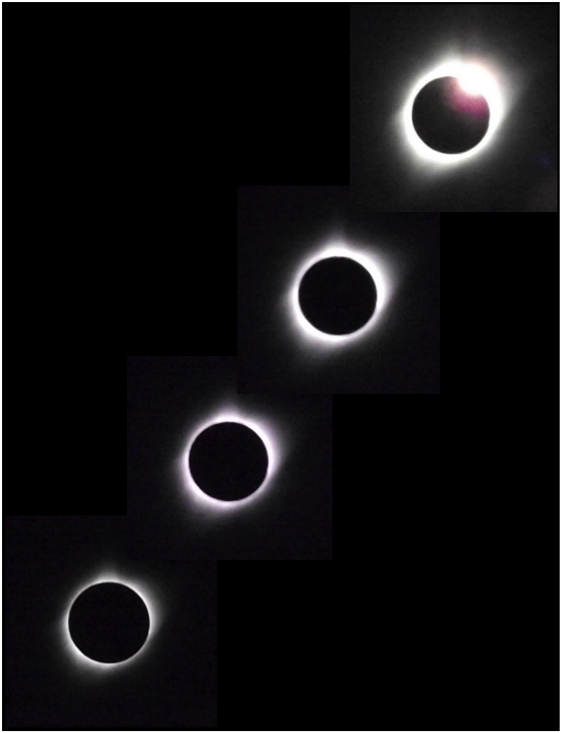
Settings for most of the partial phases were full zoom (18x), autofocus, ISO 3200, f/11, and 1/1000s. Exposures for totality were 1/1000, 1/500, 1/320, and 1/160s for the diamond ring. All shots were handheld.
Transit of Mercury, 1999:
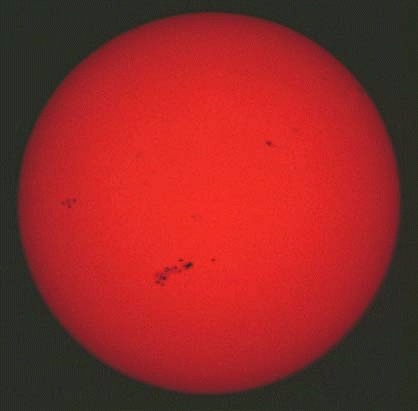
(Brightness and contrast have been adjusted.)
Mercury is located on the limb at about 11 o’clock – see also below.
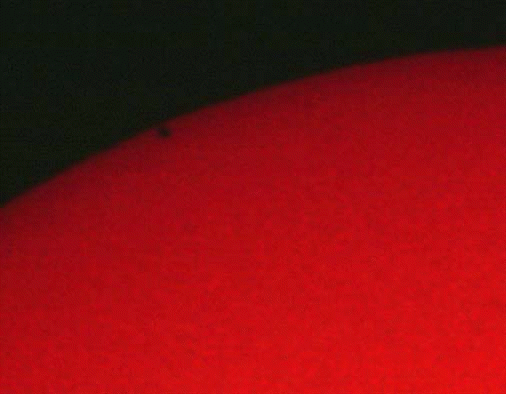
Comet Hale-Bopp, 1997:
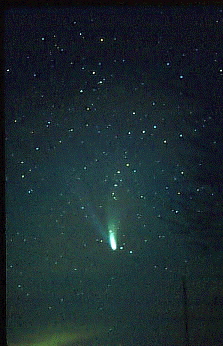
1997-03-19; ISO 400, 50mm f/1.4, 30s
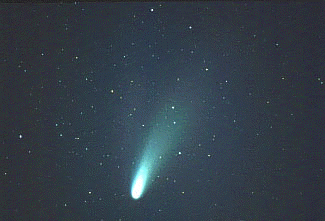
1997-03-25; ISO 400, 210mm f/3.8, 2m; driven

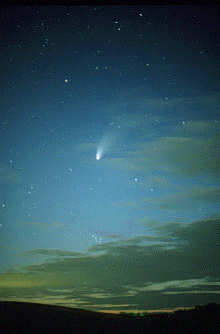
1997-04-23; ISO 400, 50mm f/1.4, 30s
Transit of Venus, 2004:

The Transit of Venus, S of Mankato, MN; 2004-06-08;
Venus is the notch on the Sun’s limb at about 3:30.
June 8, 2004 was not exactly clear in Mankato. Sunrise occurred around 5:34 a.m. CDT, but the Sun remained hidden behind the clouds for quite awhile, producing the following series of murky images:
It did not look good at sunrise.

It wasn’t much better at 6:00 a.m.

Finally the disc appeared around 6:11
— after 3rd contact at 6:04.








In each closeup a small notch can be seen in the limb of the Sun, on the right — just below center; that would be Venus. It finally cleared the Sun’s disk by about 6:25.
Images of the Sun were taken using a Fuji FinePix S5000 with 22x zoom. Settings: ISO 200, f/9, 1/250s; the filter was two sheets of mirror window film — about 4 magnitudes of attenuation.
Transit of Venus, 2012:
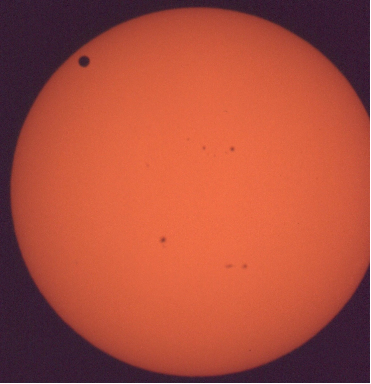
The Transit of Venus, from Trafton Science Center, MNSU, Mankato, MN; 2012-06-05
June 5, 2012 was a fine day in Mankato. The transit began shortly after 5:00 PM and was still in progress when the sun sank into the western clouds about 3 hours later. Most of the time was devoted to providing visitors with telescopic views of the transit through a variety of scopes. Occasionally I managed to mount my camera on my C8 to take a few slides:
(Konica T4 body on Celestron 8 (equatorial mount), with 8″ OD-5 filter, 2000mm f/10; ISO 100 Ektachrome color slide film, expired August 2008 but still good!)
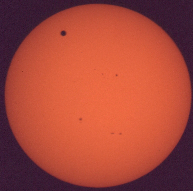

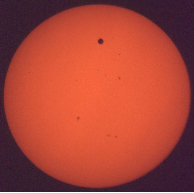
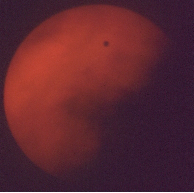
From here on, the clouds became a big factor; by 8:30 PM, the show was over. But it was an excellent show.
